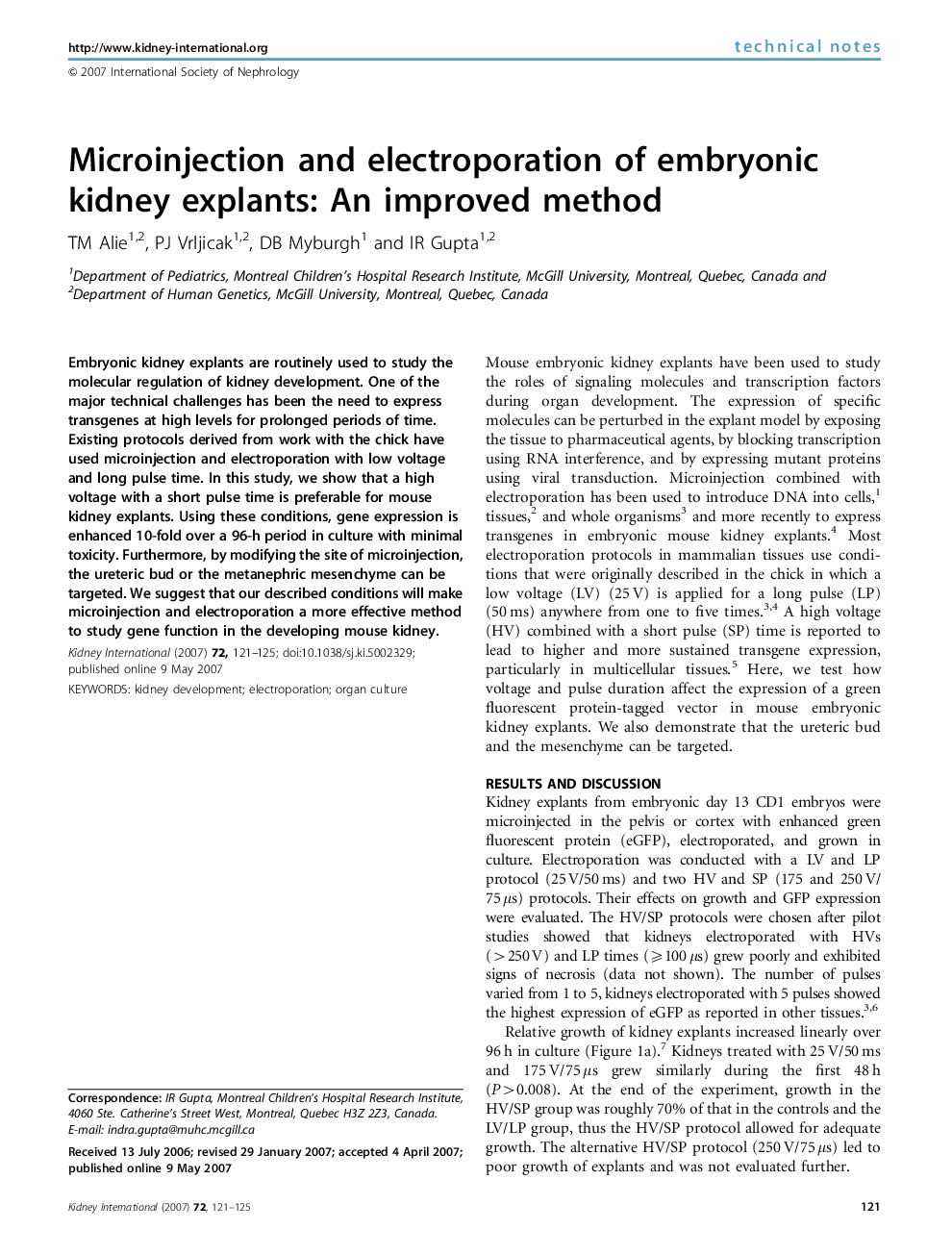| Article ID | Journal | Published Year | Pages | File Type |
|---|---|---|---|---|
| 3887023 | Kidney International | 2007 | 5 Pages |
Embryonic kidney explants are routinely used to study the molecular regulation of kidney development. One of the major technical challenges has been the need to express transgenes at high levels for prolonged periods of time. Existing protocols derived from work with the chick have used microinjection and electroporation with low voltage and long pulse time. In this study, we show that a high voltage with a short pulse time is preferable for mouse kidney explants. Using these conditions, gene expression is enhanced 10-fold over a 96-h period in culture with minimal toxicity. Furthermore, by modifying the site of microinjection, the ureteric bud or the metanephric mesenchyme can be targeted. We suggest that our described conditions will make microinjection and electroporation a more effective method to study gene function in the developing mouse kidney.
